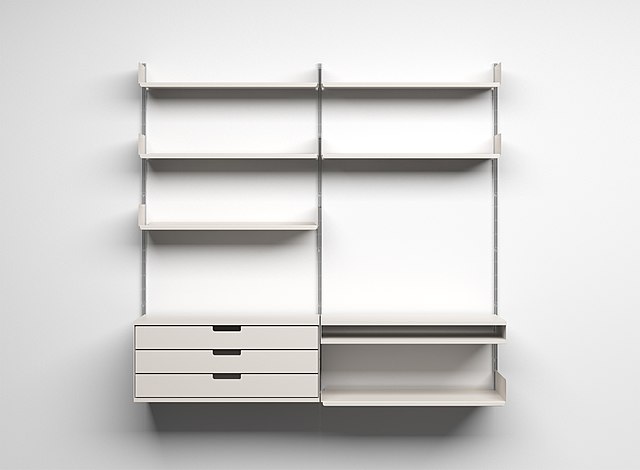I just finished reading the monograph Dieter Rams: As Little Design as Possible
This was my first introduction to Rams, but I recognized his work in the 606 Universal Shelving System, Braun shavers, and the SK4 record player. These products were so successful they set the standard design for whole classes of products to follow. For example, I’ve never seen a record player without a clear case.


As I read, I found myself agreeing with much of Rams’ principles; some half-formed ideas I couldn’t yet articulate were crystallized by his words.
Rams on Aesthetics
Rams’ tenet that resonated with me most was the idea that aesthetic beauty requires a certain simplicity and humility. He disliked “visual pollution” and strived for calm and order:
I wanted to clean up, to get rid of the chaos. But the chaos has got worse since then. Chaos from products, noise, and pollution. We are not really in control of anything…We have too many things. Our world is filled with too many products with superficial attractions and little or no use.
On the Unsustainability of Rampant Consumerism
Rams believed rampant consumerism couldn’t be forever viable and stressed quality over quantity, restraint over vanity, and environmental sustainability over ostentatious consumption. Even though he worked within the system of capitalism and mass production, he didn’t think his work and beliefs were contradictory. Rams saw design as a motor for change, as a way to convince users to buy fewer goods that, although more expensive, lasted longer. “Weniger aber besser” (less but better), he’d say.
He drew a distinction between verbraucher – one who consumes or uses things up – and gerbraucher – one who makes use of something. I think of this as the difference between someone who merely accepts input vs someone who leverages modern products to create something of value.
On What Makes a Good Designer and Product
A good designer can empathize with users, analyze their needs, and use appropriate media to create a product that fulfills its intended use in an innovative way. Rams went so far as to say, “Indifference towards people and the reality in which they live is actually the one and only cardinal sin in design.” This reminds me of Linus Torvald’s sentiments on Linux.
A good product is the result of designers’ ability to anticipate the needs of the user.
One has to get to know the use-reality of the product. One has to understand the wishes and expectations of the user. One must know the limitations of the technology and the production. One has to understand the market and understand what is best left alone and what would be plain fraud.
On the Role of Design Within a Company
Rams believed that for a company to be product-driven, the emphasis must be supported across the board not just the design department. This commitment brings profitable and lasting market performance as well as innovation that creates entirely new markets. Can you spell A-p-p-l-e?
Rams’ House

[The] composition of these rooms represents the basic intention behind my design: simplicity, essentiality, and openness. The objects do not boast about themselves, take center stage or restrict but withdraw into the background…In a world which is…destructively loud and visually confusing, design…help[s] generate a level of calm that allows people to come to themselves. (Lovell, 141)


Rams’ 15 Principles
- The first question is not if one should be designing but how.
- Is the product that we are designing really necessary? Are there not already other similar, tried, and tested appliances that people have got used to and are good and functional? Is innovation in this instance really necessary?
- Will it really enrich people’s lives or does it just appeal to their covetousness, possessiveness, or idea of status? Or does it wake desire because it is offering something new?
- Is it conceived for the short- or long-term, does it just help increase the speed of the cycle of throwaway goods or does it help slow it down?
- Can it be simply repaired or does it rely on an expensive customer service facility? Can it in fact be repaired at all or is the whole appliance redundant when just one part of it breaks?
- Does it exhibit fashionable and therefore aesthetically short-lived design elements?
- Does it help people or incapacitate them? Does it make them more free or more dependent?
- Is it so accomplished and perfect that it perhaps incapacitates or humiliates you?
- Which previous human activity does it replace and can that really be called progress?
- What possibility for change, what scope does the product offer people?
- Can the product be used in other, perhaps playful, ways?
- Does the product really offer convenience or does it encourage passivity?
- What does the experience improvement look like in a broader context?
- Does it make an action or act on the whole more complete or simpler, is it easy to operate or do you have to learn how to use it?
- Does it arouse curiosity and the imagination? Does it encourage desire to use it, understand it, and even to change it?